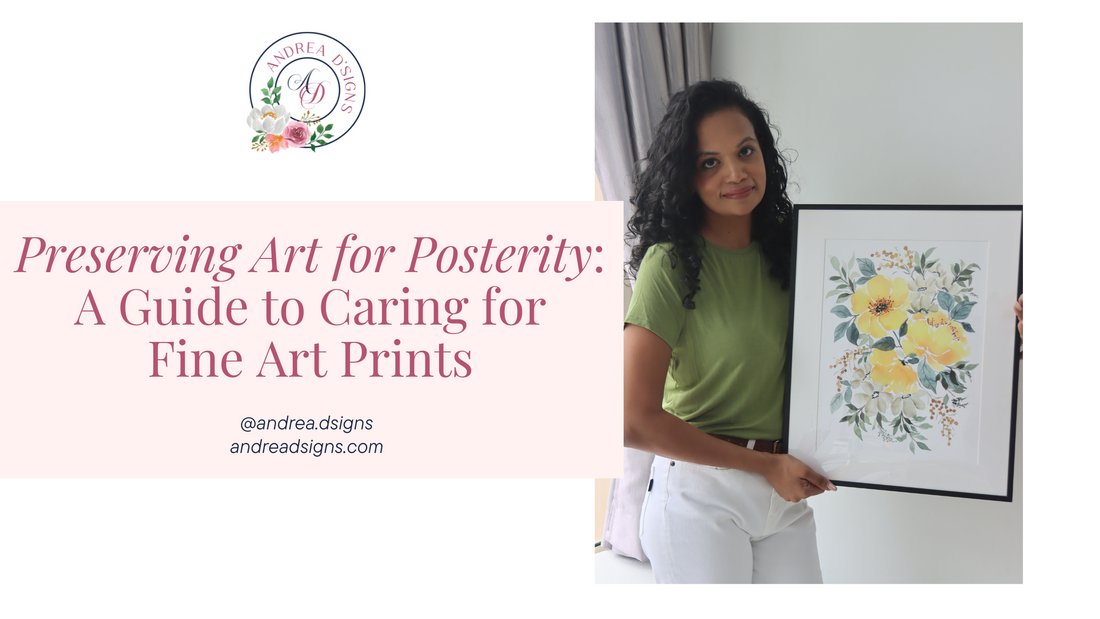Welcome art enthusiasts! Fine art prints are exquisite creations that deserve tender loving care to ensure they stand the test of time. Whether you have invested in a limited-edition print or own a beloved masterpiece, proper care is crucial to preserve the beauty and value of your art for generations to come. In this blog post, we'll explore practical advice on how to properly care for your fine art prints, covering framing options, display considerations, and protection from environmental factors.


1. Framing Options:
Choosing the right frame is essential for the longevity of your fine art print. Here are some framing tips to keep your artwork safe:
a. Conservation Materials: Always opt for acid-free mats and backing boards to prevent chemical reactions that could damage the print over time. UV-resistant glass or acrylic glazing is a must to shield the artwork from harmful ultraviolet rays.
b. Frame Depth: Consider the depth of the frame, especially if the print is on canvas or has a three-dimensional element. A shallow frame might press against the artwork, causing damage over time.
c. Spacer and Mounting: Use a spacer to create a gap between the glazing and the print to prevent condensation, which can lead to mold and deterioration. Attaching the print with acid-free, archival tape or using corners made of acid-free paper will ensure secure mounting without harming the art.


Where and how you display your fine art print can greatly influence its preservation. Here are some crucial factors to consider:
a. Avoid Direct Sunlight: Never hang your artwork in direct sunlight or under bright artificial lights. Prolonged exposure to UV rays can cause fading and discoloration.
b. Temperature and Humidity: Maintain a stable environment for your art. Extreme fluctuations in temperature and humidity can cause the paper to expand and contract, leading to warping or cracking. Aim for a temperature range of 65-75°F (18-24°C) and a relative humidity level between 40-55%.
c. Avoid High Traffic Areas: Hanging your art in high-traffic areas may increase the risk of accidental damage from bumps, knocks, or spills.

3. Protection from Environmental Factors:
Shielding your fine art print from environmental hazards is paramount to its preservation. Here's what you should be mindful of:
a. Acid-Free Storage: When not displaying your prints, store them flat in acid-free folders or sleeves to protect against dust, dirt, and pollutants.
b. Handling with Care: Always handle your fine art prints with clean hands or wear cotton gloves to prevent transferring oils or dirt onto the delicate surface.
c. Regular Cleaning: Dust your prints gently with a soft, lint-free cloth or a soft brush. Avoid using liquid cleaners or sprays, as they may contain harmful chemicals that could damage the print.
d. Conservation Framing for Originals: If you have an original fine art print, consider conservation framing for optimal protection. Consult a professional framer experienced in handling valuable artwork.

Your fine art prints are a valuable part of your collection and deserve the utmost care. By choosing appropriate framing options, displaying them in the right environment, and protecting them from environmental factors, you can ensure their longevity and enjoy their beauty for many years to come. Remember, when in doubt, seek advice from professional conservators or art experts who can provide personalized guidance based on the specific needs of your prints.
Here's to preserving art for posterity and continuing to admire its beauty through the ages!
Hope you found this blog post helpful. Leave a comment with your thoughts coz I'd love to hear from you.
Until next week, take care.


